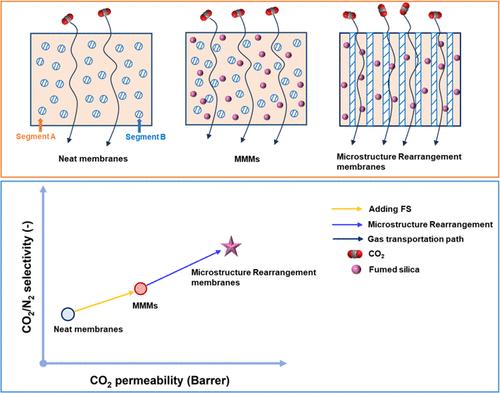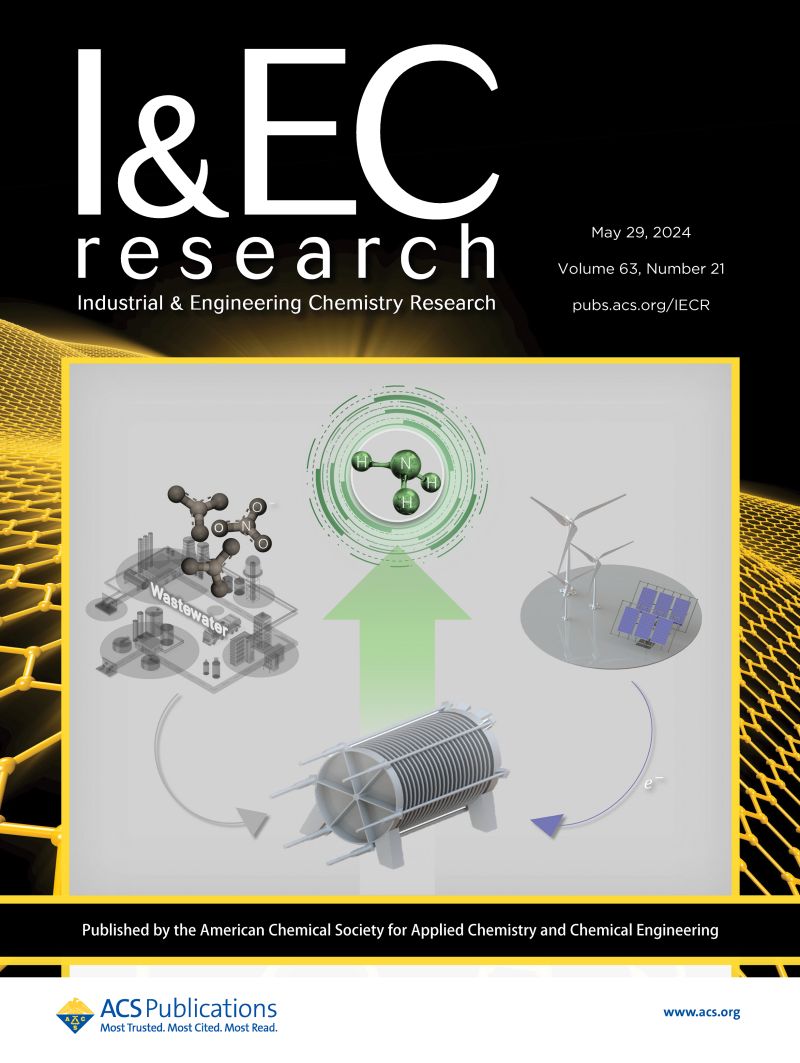Enhancing the CO2 Separation Performance of Mixed Matrix Membranes Based on Block Copolymer via Nonsolvent-Induced Microstructure Rearrangement
IF 3.8
3区 工程技术
Q2 ENGINEERING, CHEMICAL
引用次数: 0
Abstract
To strengthen the competitiveness of membrane-based CO2 capture technology, developing membranes with high CO2 separation performance is crucial. In this study, mixed matrix membranes (MMMs) were prepared by incorporating various concentrations of fumed silica (FS) into block copolymers (i.e., Pebax and SBS). The results showed that the CO2 permeability of both Pebax and SBS initially increased before decreasing as FS loading increased. Next, the MMMs were immersed in deionized (DI) water at room temperature (RT) to induce microstructural rearrangement. Results indicated that with an FS loading of 1 wt %, the CO2 permeability of Pebax-FS 1 wt %-Water membranes increased to 757.4 Barrer, 1.6 times higher than that of MMMs with the same FS concentration (477.8 Barrer). Likewise, the CO2 permeability of the SBS-FS 1 wt %-Water membranes increased to 385.2 Barrer. These findings suggest that the nonsolvent-induced microstructural rearrangement technique is simple, environmentally friendly, and has the potential to significantly improve the CO2 separation performance of MMMs based on different block copolymers.

求助全文
约1分钟内获得全文
求助全文
来源期刊

Industrial & Engineering Chemistry Research
工程技术-工程:化工
CiteScore
7.40
自引率
7.10%
发文量
1467
审稿时长
2.8 months
期刊介绍:
ndustrial & Engineering Chemistry, with variations in title and format, has been published since 1909 by the American Chemical Society. Industrial & Engineering Chemistry Research is a weekly publication that reports industrial and academic research in the broad fields of applied chemistry and chemical engineering with special focus on fundamentals, processes, and products.
 求助内容:
求助内容: 应助结果提醒方式:
应助结果提醒方式:


